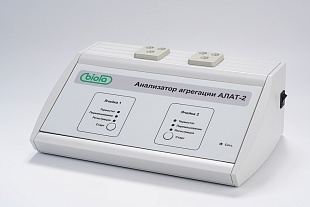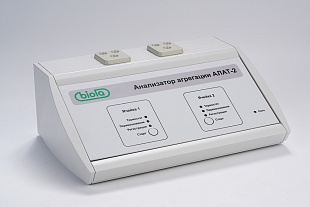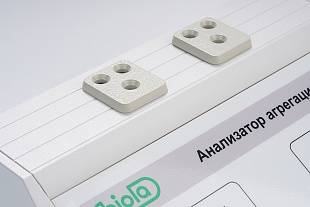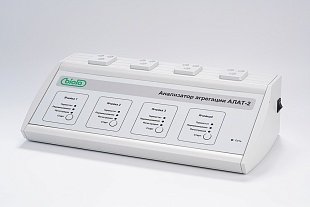Aggregation analyzer
- ORIGINAL METHOD TO ASSESS PLATELET AGGREGATION BASED ON THE MEASUREMENT OF AGGREGATE MEAN RADIUS*
- ROUTINE OPTICAL METHOD TO ASSESS PLATELET AGGREGATION BASED ON BORN'S METHOD OF OPTICAL DENSITY MEASUREMENT
- ORIGINAL METHOD TO MEASURE PLATELET CONCENTRATION *
* Covered by Russia, U.S. and other foreign patents
- A new highly sensitive method to study platelet aggregation based on the measurement of mean radius makes it possible to record kinetics of formation of microaggregates in real time
- Sensitivity in measurements of spontaneous aggregation is higher than in routine Breddin apparatus
- Each of two independent channels simultaneously measures optical density and aggregate mean radius
- The results of measurements can be monitored on the built-in display screen or in PC
Application fields:
- Diagnostics of thrombocyte stage of homeostasis
- Diagnostics of congenital and acquired homeostatic disturbances
- Assessment of therapeutic efficiency
- Screening of novel medical preparations
- Assessment of platelet vitality during blood transfusion
- Toxicology
Aggregation is measured both by routine turbidimetric technique and by recently developed method based on real-time measurement of aggregate mean size. The turbidimetric metric of Born and O'Brien is most widely used in modern studies of platelet aggregation. It is based on recording of the changes in optical density in platelet-rich plasma. This approach makes it possible to study not only aggregation, but also the changes in platelet shape. The latter is particular important, because the changes in platelet shape can mask the initial stage of aggregation. In addition, formation of microaggregates (consisting of less than 100 platelets) may not be reflected by the changes of optical transmission in a suspension.
In 1989, Z. A. Gabbasov et al. introduced a new method to study platelet aggregation - the optical density fluctuation analysis (ODFA), which is based on analysis of optical transmission caused by stochastic changes in the number of particles in the optical channel. The relative value of these fluctuations is proportional to aggregate mean size. This parameter is used to study aggregation kinetics. Extremely high sensitivity of ODFA makes it ideal to study spontaneous aggregation and the aggregation induced by low concentration of inductors. It is also used to study aggregation of subcellular particles and macromolecules.
The development of ODFA made it possible to measure concentration of particles in stirred suspension. Aggregation Analyzers are supplied with original software developed for IBM-compatible computers run under Windows. The software displays aggregation curves and parameters in real time, stores the data with timing marks and commentary records on the hard disk, and provides the software tools to examine and process the data off-line.
SPECIFICATION:
Sample volume 0.3 mL.Two independent channels and 4 preincubation wells per channel.
Light source - semiconductor laser, wavelength 0.86 mm.
Thermostat - 25 to 42+0.2oC or OFF independently for each channel.
Stirring speed - 100 to 1200 RPM independently for each channel.
Automatic setup of 0% and 100% light transmission.
Built-in microcontroller with menu-driven user interface.
16 position alpha-numeric display.
Interface to PC - USB.
AC line requirements - 220 to 240V, 50 or 60 Hz.
Dimensions, mm - 300x300x85.
Weight, kg - 2.8 kg.
Counter: (models 230LA, 230LA-2):
- concentration range (human platelets) 50...500 thousands/mL
- systematic error <5%
- reproducibility (standard deviation ) <5%
Accessories
| Name | ||||
|---|---|---|---|---|
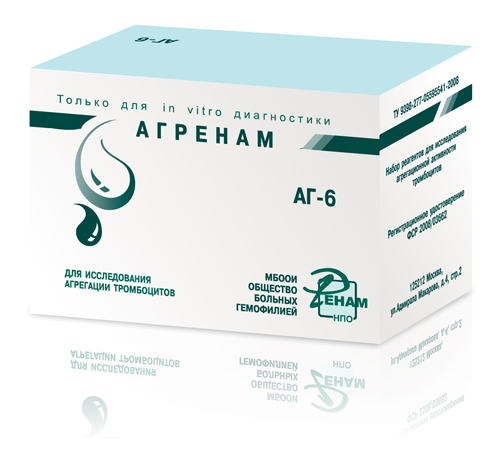 |
AGRENAM reagent kit | |||
 |
Stirrer for aggregation analyzer |
|||
 |
Agitator removal magnet |
|||
 |
Cuvette for aggregation analyzer |
|||

|
Isotonic diluent (1 L) | |||
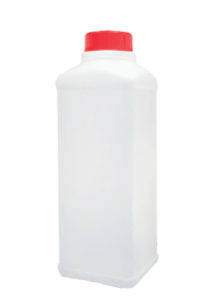 |
Isotonic diluent (0.5 L) |
|||

|
Willebrand test (set) |
|||
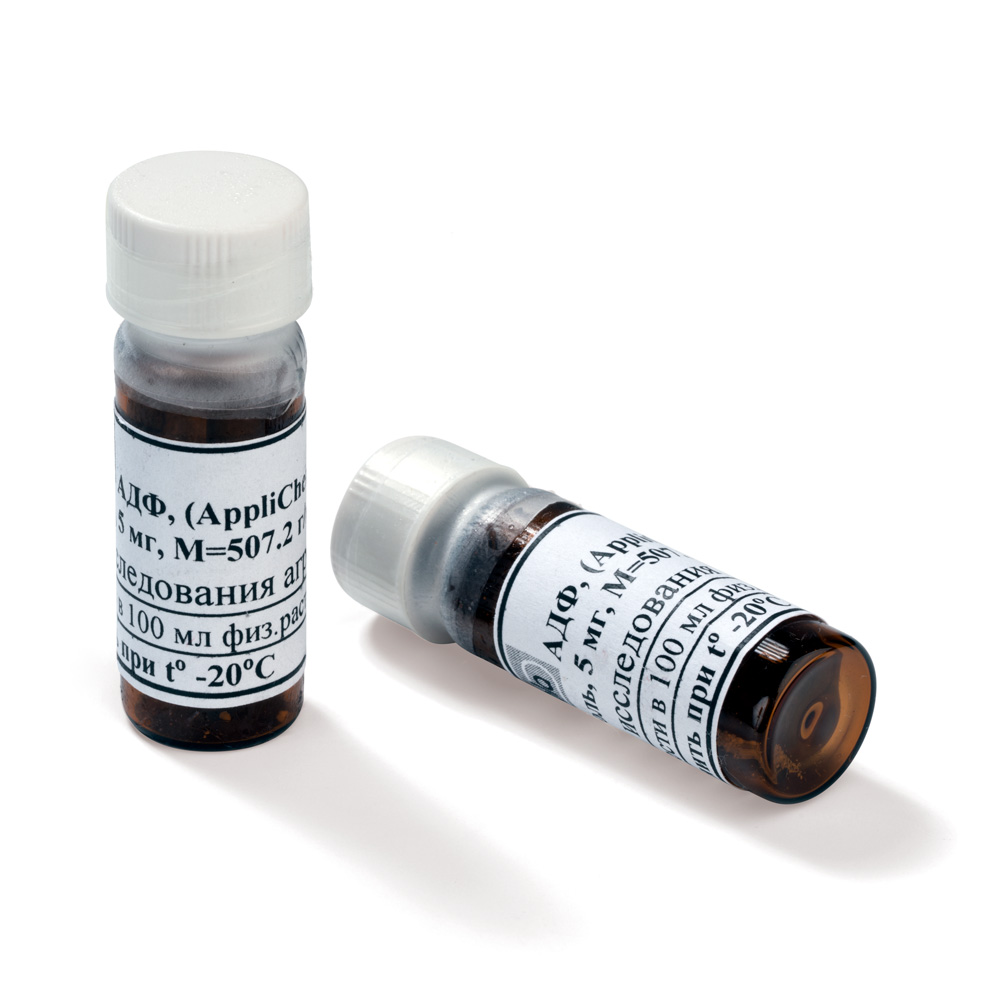 |
Adenosine diphosphate (ADP), 5 mg |
|||

